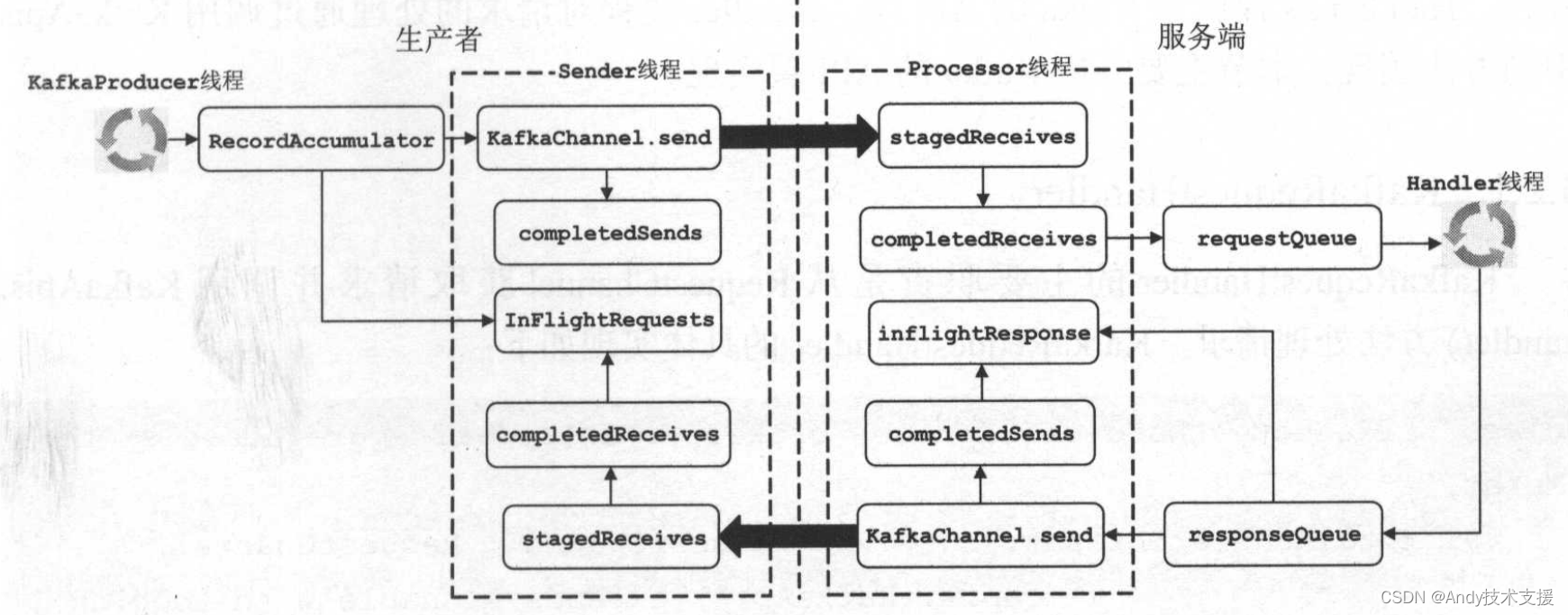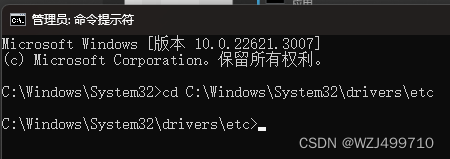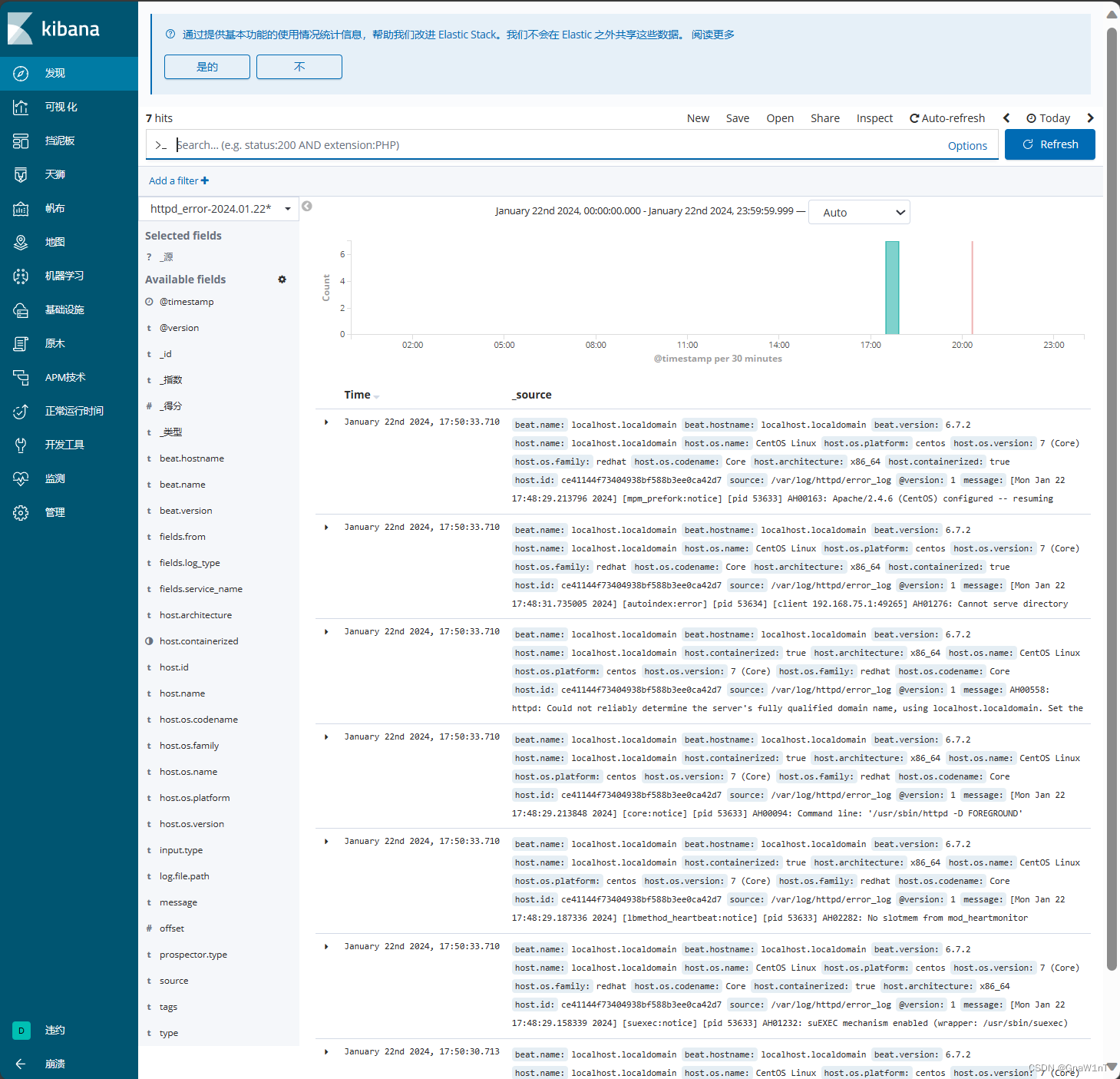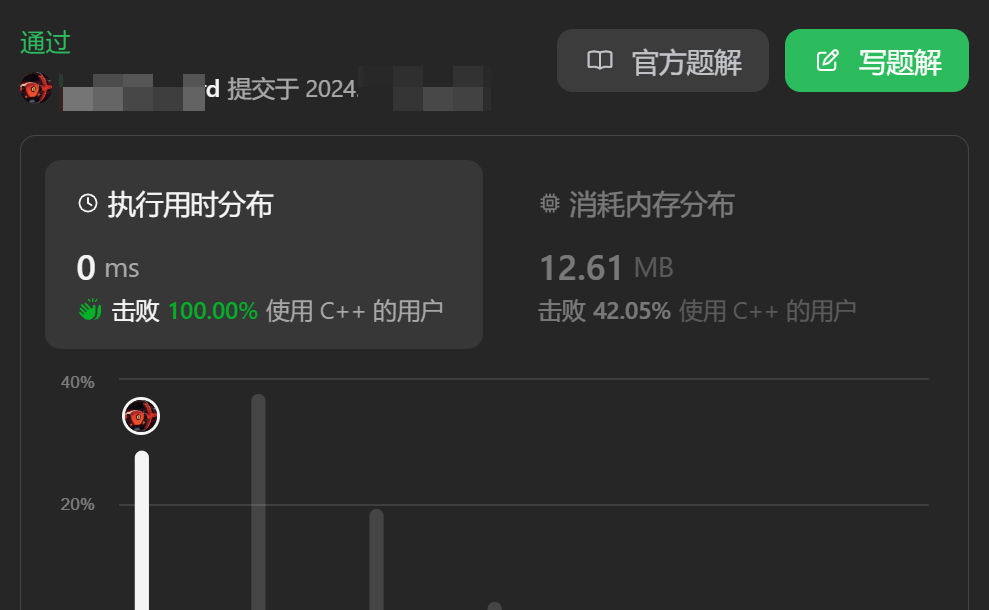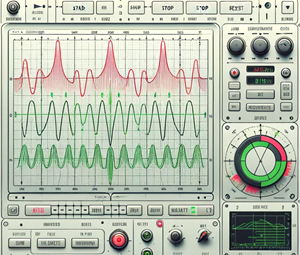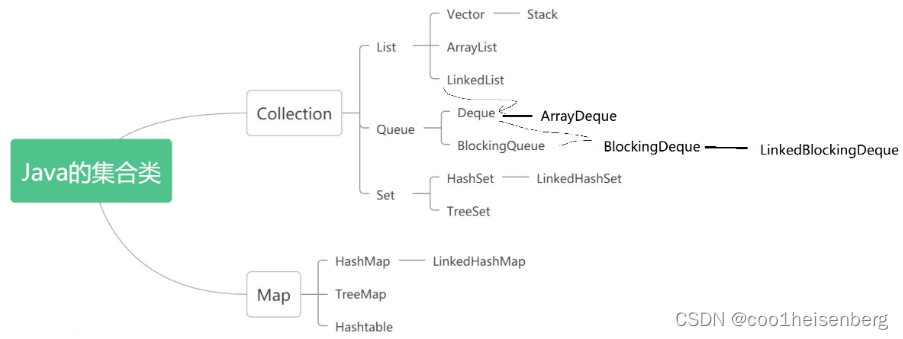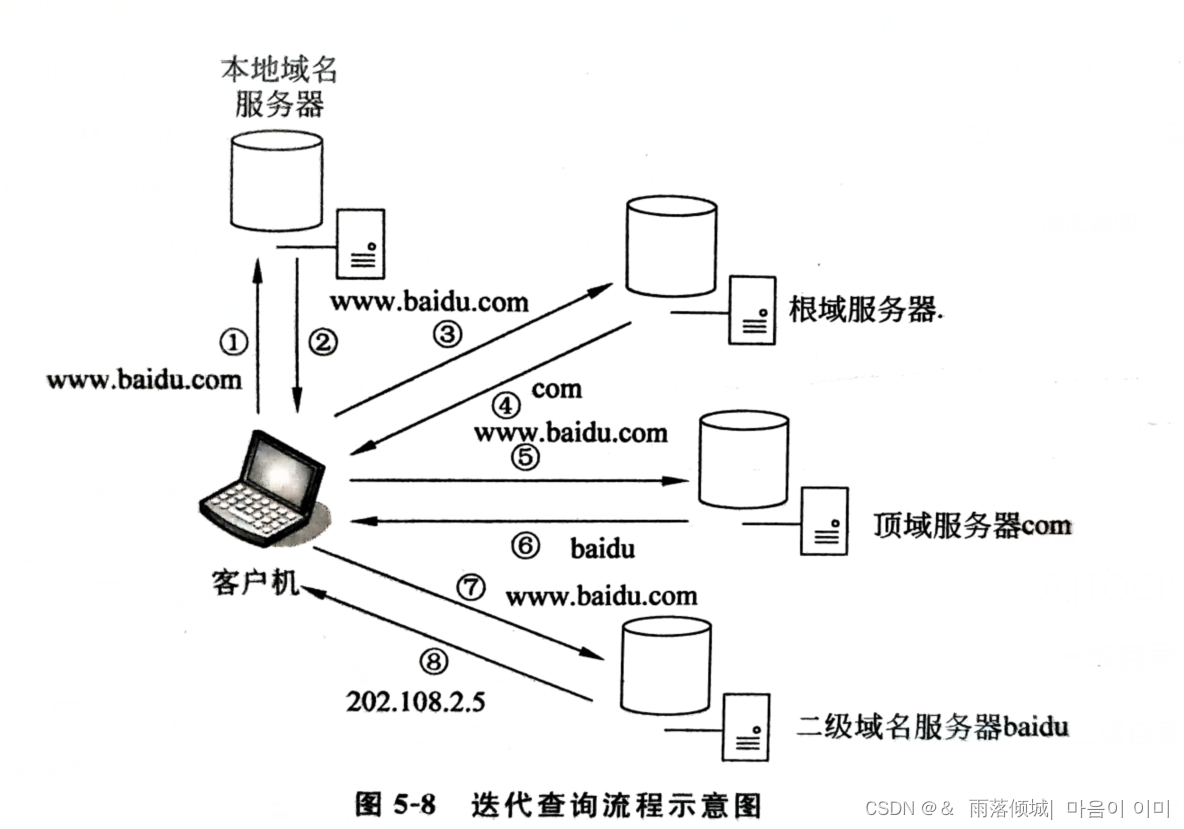文章目录
- 前言
- 一、脉冲神经元
- 二、IF神经元
- 1、神经元模型
- 2、神经元仿真
- 三、LIF神经元
- 1、神经元模型
- 2、神经元仿真
- 总结
前言
记录整合发放(integrate-and-fire, IF)神经元与漏电整合发放(leaky integrate-and-fire, LIF)神经元模型,以及在SpikingJelly中的实现方法。
一、脉冲神经元
1、脉冲神经元:只输出脉冲(1/0)的神经元
spikingjelly.activation_based.neuron
2、阈下神经动态方程:神经元根据输入及自身状态更新膜电位
微分方程: d V ( t ) d t = f ( V ( t ) , X ( t ) ) \frac{dV(t)}{dt}=f(V(t),X(t)) dtdV(t)=f(V(t),X(t))
差分近似: V [ t ] = f ( V [ t − 1 ] , X [ t ] ) V[t]=f(V[t-1],X[t]) V[t]=f(V[t−1],X[t])
3、计算步骤

X:输入
S:输出(0/1)
H:充电后、放电前的膜电位
V:放电后的膜电位
4、放电方程
def neuronal_fire(self):
self.spike = self.surrogate_function(self.v - self.v_threshold)
surrogate_function:前向传播时为阶跃函数,膜电位超过阈值时输出为1
Θ ( x ) = { 1 , x ≥ 0 0 , x < 0 \Theta(x) = \left\{\begin{matrix} 1,\quad x\ge 0\\ 0,\quad x<0\\ \end{matrix}\right. Θ(x)={1,x≥00,x<0
5、重置方程
def neuronal_reset(self):
if self.v_reset is None:
self.v = self.v - self.spike * self.v_threshold
else:
self.v = (1. - self.spike) * self.v + self.spike * self.v_reset
膜电位达到阈值时神经元发放脉冲,膜电位恢复至静息值
v
=
{
v
−
v
t
h
r
e
s
h
o
l
d
,
v
r
e
s
e
t
=
N
o
n
e
v
r
e
s
e
t
,
o
t
h
e
r
w
i
s
e
v = \left\{\begin{matrix} \begin{alignat*}{2} v-v_{threshold},&\quad v_{reset}=None\\ v_{reset},&\quad otherwise \end{alignat*} \end{matrix}\right.
v={v−vthreshold,vreset,vreset=Noneotherwise
二、IF神经元
1、神经元模型
(1)整合发放(integrate-and-fire)神经元:neuron.IFNode
理想积分器,无输入时膜电位保持恒定
(2)模型方程: I ( t ) = C d V ( t ) d t I(t)=C\frac{dV(t)}{dt} I(t)=CdtdV(t)
I(t):输入电流
V(t):膜电位
C:膜电容
(3)阈下神经动力学方程: H [ t ] = V [ t − 1 ] + X [ t ] H[t]=V[t-1]+X[t] H[t]=V[t−1]+X[t]
(4)充电方程
def neuronal_charge(self, x: torch.Tensor):
self.v = self.v + x
(5)构建IF神经元:layer = neuron.IFNode()
构造参数:
①v_threshold=1.0:阈值电压
②v_reset=0.0:重置电压
③surrogate_function=surrogate.Sigmoid():反向传播梯度替代函数
④step_mode=‘s’:步进模式,单步’s’,多步’m’
⑤store_v_seq=False:是否保存所有时间步的膜电位self.v
2、神经元仿真
(1)构建输入与神经元层,前50步输入为1,后50步输入为0
import torch
from torch import nn
from spikingjelly.activation_based import neuron, monitor, functional
from spikingjelly import visualizing
####################构建输入####################
T = 100 # 时间步数
N = 1 # 样本数目
D = 1 # 输入维度/神经元数目
x_seq1 = torch.ones(50, N, D)
x_seq2 = torch.zeros(50, N, D)
x_seq = torch.cat((x_seq1,x_seq2), 0)
# 构建一层IF神经元
net = nn.Sequential(neuron.IFNode(v_threshold=9.0,
v_reset=0.0,
step_mode='s',
store_v_seq=False))
print(net)
神经元数量N由输入维度(T,N)确定
使用脉冲神经元代替神经网络的激活函数
(2)根据输入按时间步更新神经元膜电位与输出
单步模式(默认):逐步传播,深度优先遍历,内存占用小,适用于ANN2SNN
需要手动for循环按时间步计算
####################记录神经元状态####################
v_list = [] # 膜电位
s_list = [] # 神经元输出
####################单步模式:逐步传播####################
with torch.no_grad(): # 计算时关闭自动求导
for i in range(T):
y = net(x_seq[i])
v_list.append(net[0].v)
s_list.append(y)
functional.reset_net(net) # 重置神经元状态
####################可视化膜电位与输出####################
v_list = torch.cat(v_list).flatten()
s_list = torch.cat(s_list).flatten()
visualizing.plot_one_neuron_v_s(v_list.numpy(),
s_list.numpy(),
v_threshold=net[0].v_threshold,
v_reset=net[0].v_reset,
figsize=(12, 8),
dpi=100)
脉冲神经元是有状态的(self.v)
输入一批样本后需要进行复位:functional.reset_net(net)
(3)网络结构
Sequential(
(0): IFNode(
v_threshold=9.0, v_reset=0.0, detach_reset=False, step_mode=s, backend=torch
(surrogate_function): Sigmoid(alpha=4.0, spiking=True)
)
)
4、各时间步神经元的膜电位与输出

三、LIF神经元
1、神经元模型
(1)漏电整合发放(leaky integrate-and-fire)神经元:neuron.LIFNode
引入漏电项,无输入时膜电位恢复至静息电位,模拟离子扩散
(2)模型方程:
I
(
t
)
−
g
(
V
(
t
)
−
E
)
=
C
d
V
(
t
)
d
t
I(t)-g(V(t)-E)=C\frac{dV(t)}{dt}
I(t)−g(V(t)−E)=CdtdV(t)
I(t):输入电流
V(t):膜电位
C:膜电容
g:泄漏电导
E:静息电位
(3)阈下神经动力学方程:
H [ t ] = { V [ t − 1 ] + X [ t ] − 1 τ ( V [ t − 1 ] − V r e s e t ) , d e c a y _ i n p u t = F a l s e V [ t − 1 ] + 1 τ ( X [ t ] − ( V [ t − 1 ] − V r e s e t ) ) , d e c a y _ i n p u t = T r u e H[t] = \left\{\begin{matrix} \begin{alignat*}{2} V[t-1]+X[t]-\frac{1}{\tau}(V[t-1]-V_{reset}),&\quad decay\_input=False\\ V[t-1]+\frac{1}{\tau}(X[t]-(V[t-1]-V_{reset})),&\quad decay\_input=True \end{alignat*} \end{matrix}\right. H[t]=⎩ ⎨ ⎧V[t−1]+X[t]−τ1(V[t−1]−Vreset),V[t−1]+τ1(X[t]−(V[t−1]−Vreset)),decay_input=Falsedecay_input=True
decay_input为False时,膜电位V的衰减由
1
τ
(
V
−
V
r
e
s
e
t
)
\frac{1}{\tau}(V-V_{reset})
τ1(V−Vreset)控制
decay_input为True时,输入X[t]参与衰减,乘以系数
1
τ
\frac{1}{\tau}
τ1
(4)充电方程
def neuronal_charge(self, x: torch.Tensor):
if self.decay_input:
if self.v_reset is None or self.v_reset == 0.:
self.v = self.v + (x - self.v) / self.tau
else:
self.v = self.v + (x - (self.v - self.v_reset) / self.tau
else:
if self.v_reset is None or self.v_reset == 0.:
self.v = self.v + x - self.v / self.tau
else:
self.v = self.v + x - (self.v - self.v_reset) / self.tau
(5)构建LIF神经元:layer = neuron.LIFNode()
构造参数:
①tau=2.0:膜电位时间常数
②decay_input=True:输入是否参与衰减
③v_threshold=1.0:阈值电压
④v_reset=0.0:重置电压
⑤surrogate_function=surrogate.Sigmoid():梯度替代函数
⑥step_mode=‘s’:步进模式
⑦store_v_seq=False:是否保存所有时间步的膜电位self.v
2、神经元仿真
(1)构建输入与神经元层,前50步输入为1,后50步输入为0
####################构建输入####################
T = 100 # 时间步数
N = 1 # 样本数目
D = 1 # 输入维度/神经元数目
x_seq1 = torch.ones(50, N, D)
x_seq2 = torch.zeros(50, N, D)
x_seq = torch.cat((x_seq1,x_seq2), 0)
# 构建一层LIF神经元
net = nn.Sequential(neuron.LIFNode(tau=10.0,
decay_input=True,
v_threshold=0.9,
v_reset=0.0,
step_mode='m',
store_v_seq=True))
print(net)
(2)根据输入按时间步更新神经元膜电位与输出
多步模式:逐层传播,广度优先遍历,并行速度更快,适用于梯度替代法
直接计算,不需要手动写for循环
####################监视器记录神经元状态####################
# 记录膜电位
monitor_v = monitor.AttributeMonitor('v_seq',
pre_forward=False,
net=net,
instance=neuron.LIFNode)
# 记录输出
monitor_o = monitor.OutputMonitor(net=net,
instance=neuron.LIFNode)
####################多步模式:逐层传播####################
with torch.no_grad(): # 计算时关闭自动求导
net(x_seq)
functional.reset_net(net) # 重置神经元状态
####################可视化膜电位与输出####################
v_list = monitor_v.records[0].flatten()
s_list = monitor_o.records[0].flatten()
visualizing.plot_one_neuron_v_s(v_list.numpy(),
s_list.numpy(),
v_threshold=net[0].v_threshold,
v_reset=net[0].v_reset,
figsize=(12, 8),
dpi=100)
使用monitor监视器记录神经元输出与成员变量(膜电位)
(3)网络结构
Sequential(
(0): LIFNode(
v_threshold=0.9, v_reset=0.0, detach_reset=False, step_mode=m, backend=torch, tau=10.0
(surrogate_function): Sigmoid(alpha=4.0, spiking=True)
)
)
(4)各时间步神经元的膜电位与输出

输入为0时,膜电位自发泄漏
(5)当时间常数tau很大时,LIF神经元退化为IF神经元
net = nn.Sequential(neuron.LIFNode(tau=1.0e8,
decay_input=False,
v_threshold=9.0,
v_reset=0.0,
step_mode='m',
store_v_seq=True))
Sequential(
(0): LIFNode(
v_threshold=9.0, v_reset=0.0, detach_reset=False, step_mode=m, backend=torch, tau=100000000.0
(surrogate_function): Sigmoid(alpha=4.0, spiking=True)
)
)
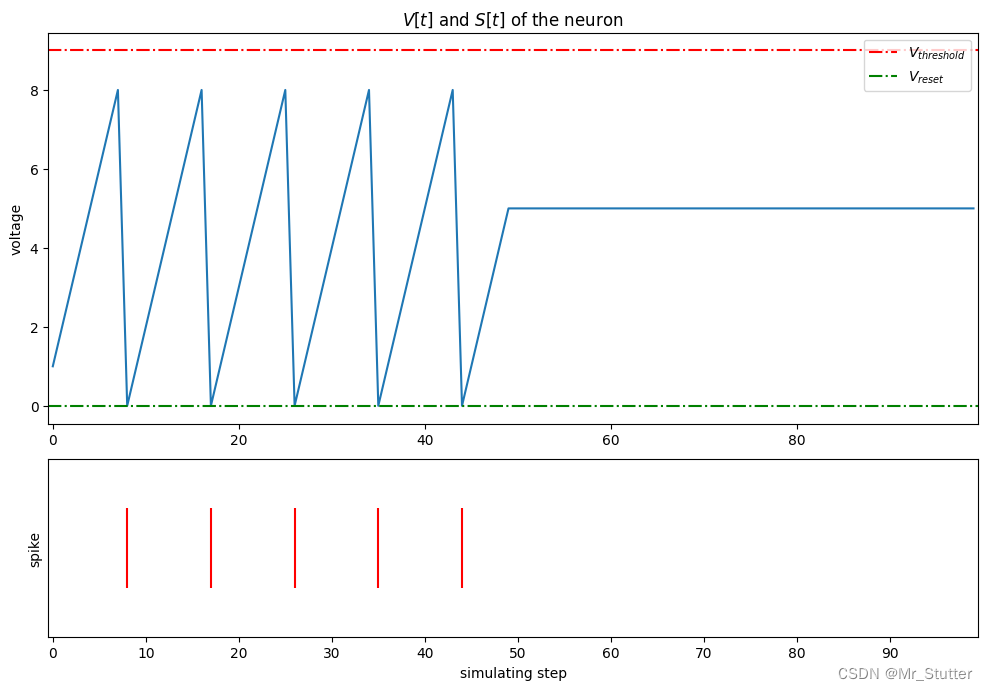
总结
不同神经元的主要差别在于阈下神经动力学方程(充电方程),而放电方程与重置方程相似;
IF神经元具有记忆效应,在无输入时,神经元膜电位会一直维持在当前状态;
LIF神经元引入漏电流项,在无输入时,膜电位会恢复至静息电位;
通过monitor和visualizing可以方便地监控和绘制神经元的膜电位与输出。
参考:
[1] SpikingJelly的文档——神经元
[2] 脉冲神经网络:模型、学习算法与应用
[3] 脉冲神经网络研究进展综述






